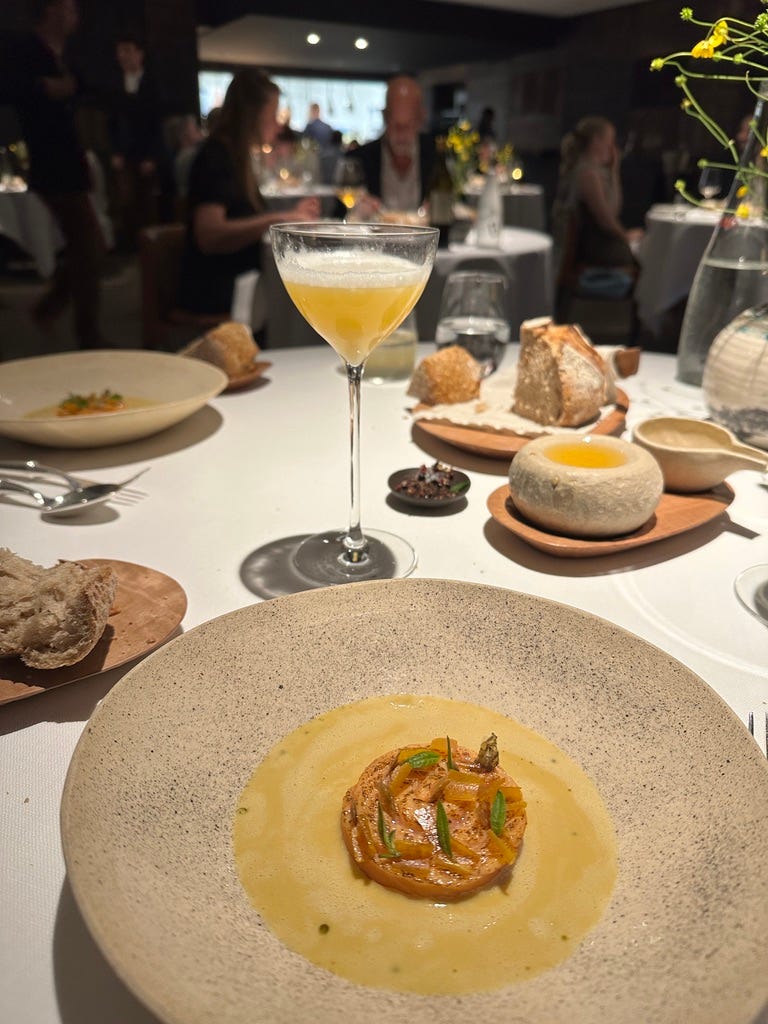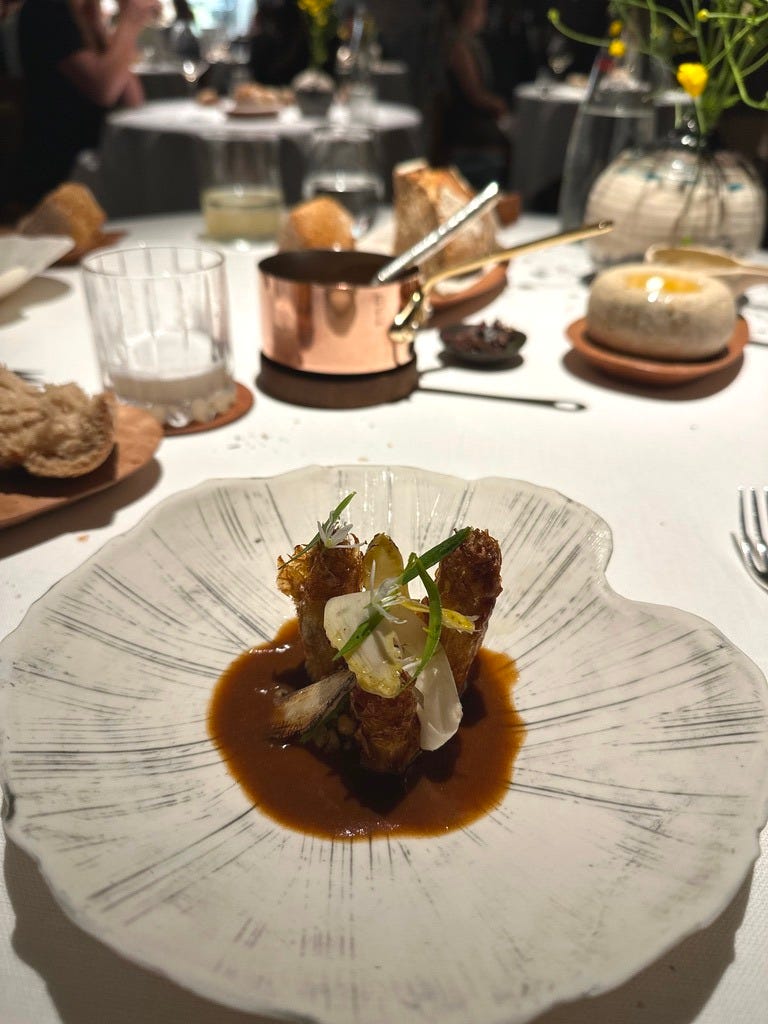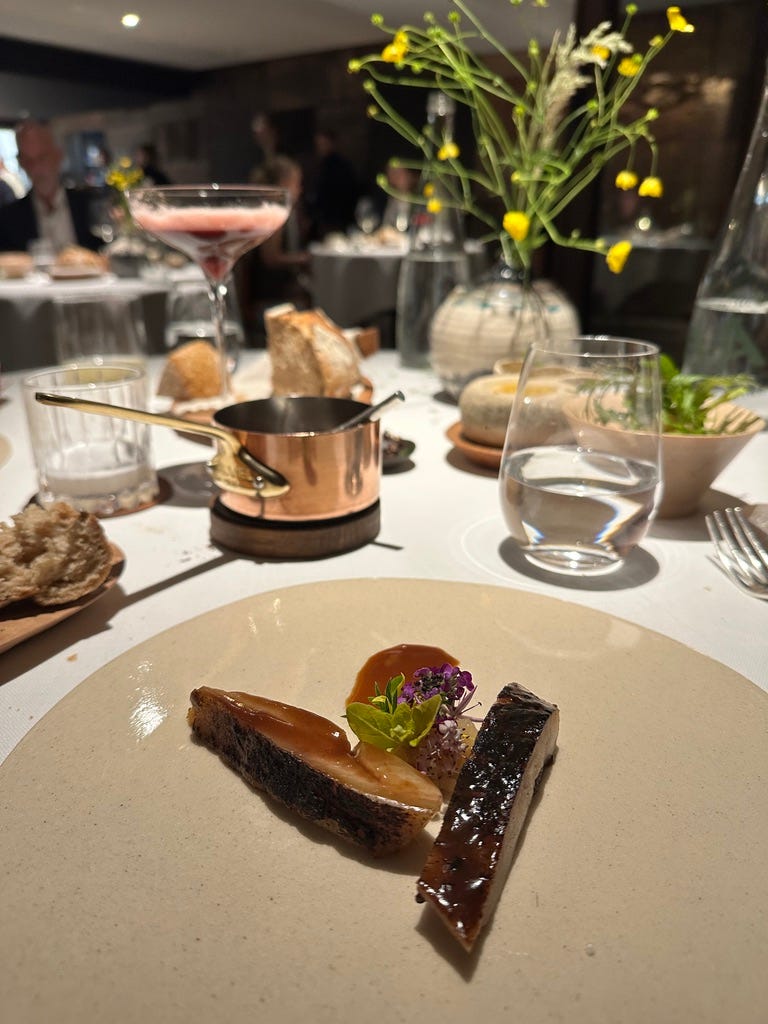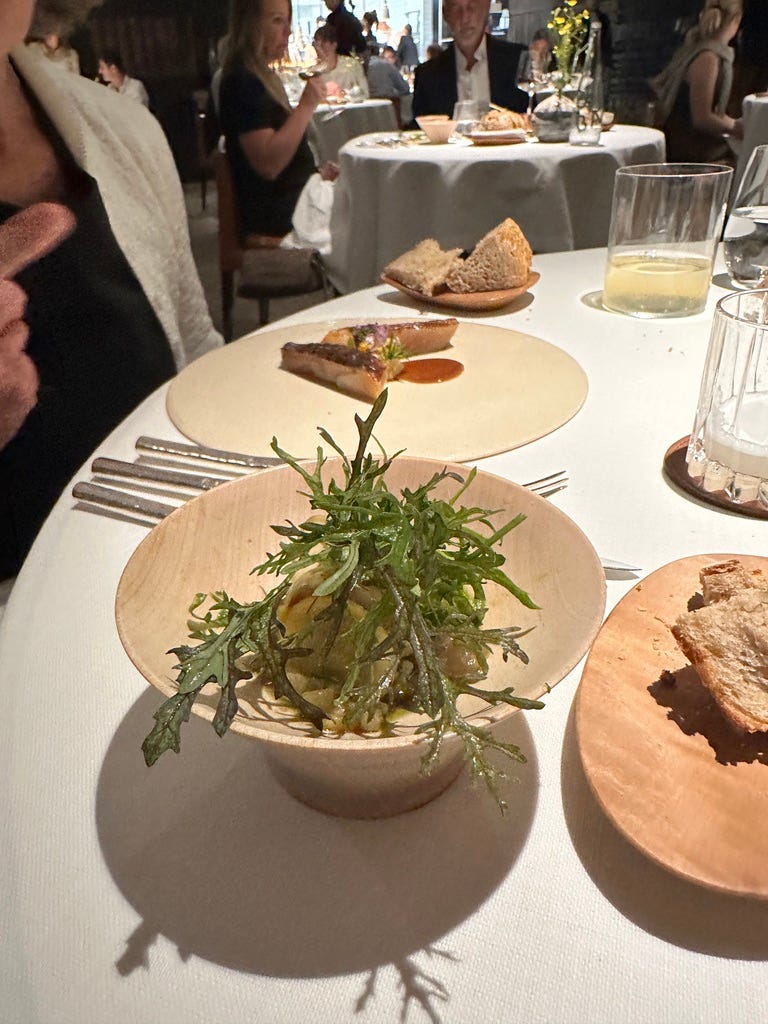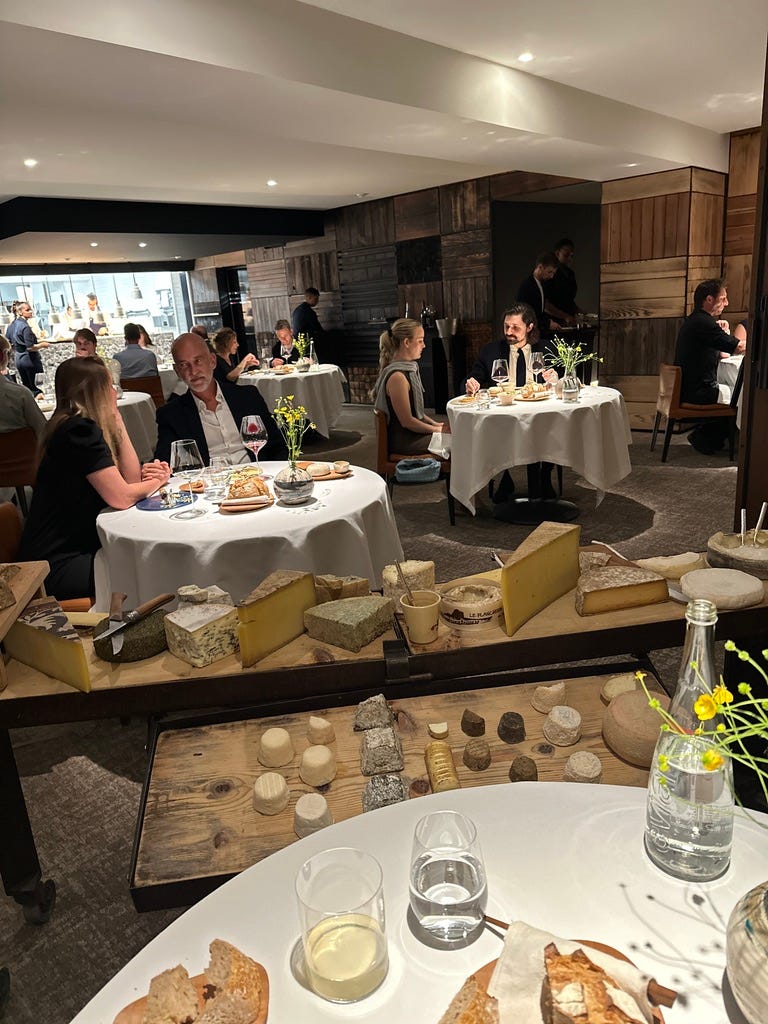Le Clos des Sens: The Crown Jewel of Annecy’s 15 Michelin Stars
What’s fresh is local. What’s bold is universal.
Dinner at Le Clos des Sens ⭐️⭐️⭐️
Annecy, France — May 28, 2025
(not a paid review. just a foodie who loves eating)
Just 40 minutes outside Geneva,
perched above a glacial lake,
is a town overflowing with culinary ambition.
But only one restaurant holds the rare three: Le Clos des Sens
No imported luxuries.
No truffle theatrics.
Simply: we grow what we cook.
We fish what’s close.
And we trust that’s enough.
Some meals remind you why we chase beauty.
Why we pause.
Why we bother trying to name the emotions food brings out in us.
This was one of those meals.
Chef Franck Derouet cooks like he’s honoring a promise.
A promise to the land.
To his mentor, Laurent Petit,
who built this place on a radical idea:
What if excellence didn’t require excess?
What if we stopped chasing more
and chased depth instead?
And honestly?
That idea—that excellence can be quiet—
has stuck with me more than any of the flavors.
A soft kind of conviction that crept into my bones.
One that made me ask:
What if the most powerful thing you could do is stop performing?
What if being deeply yourself
without apology or embellishment
is what people remember most?
We spend so much of life performing.
In meetings. On dates. Online.
We curate. We edit.
We try to be what others will applaud.
But this meal reminded me:
You don’t need to prove you’re worth noticing.
You just need to live in alignment.
To choose what matters and hold the line.
We stayed upstairs in the old stone mansion that houses the restaurant.
There was no room service. No fancy menu.
Just someone from the same kitchen making your breakfast.
It was one of the quietest joys I’ve felt in a long time.
Not because it was grand.
Because it was considered.
And maybe that’s the legacy of Clos des Sens.
A reminder that you don’t need to overcompensate when you know who you are.
Here’s what we ate—and what stayed with me
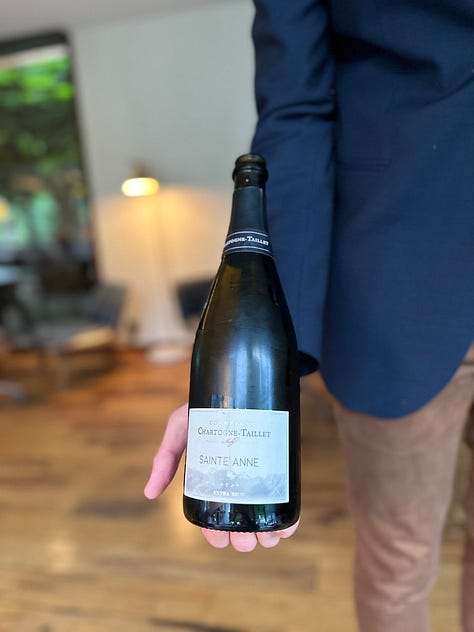

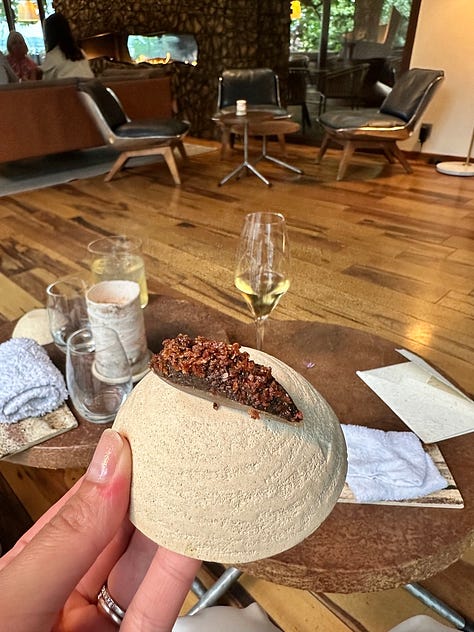
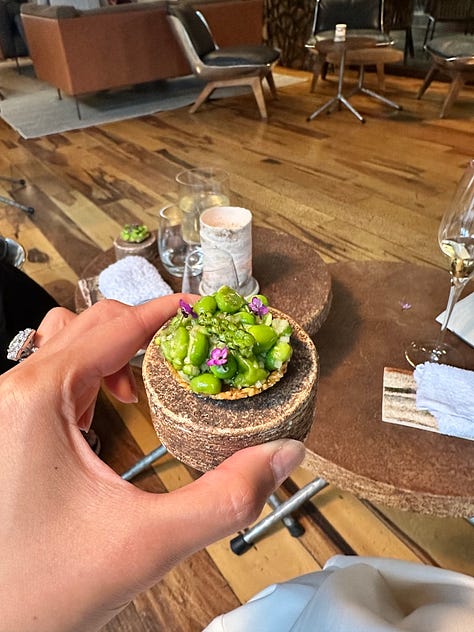
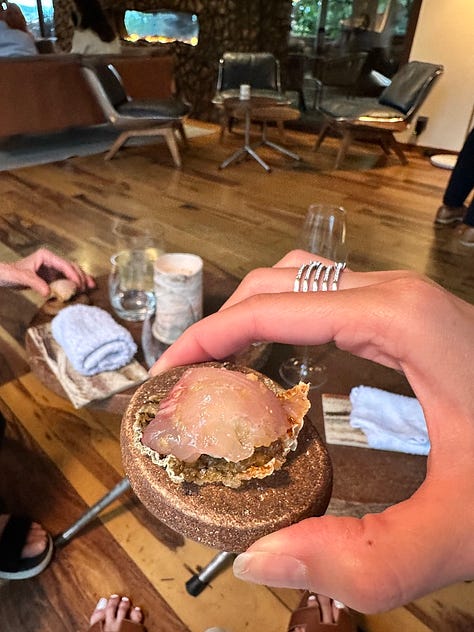
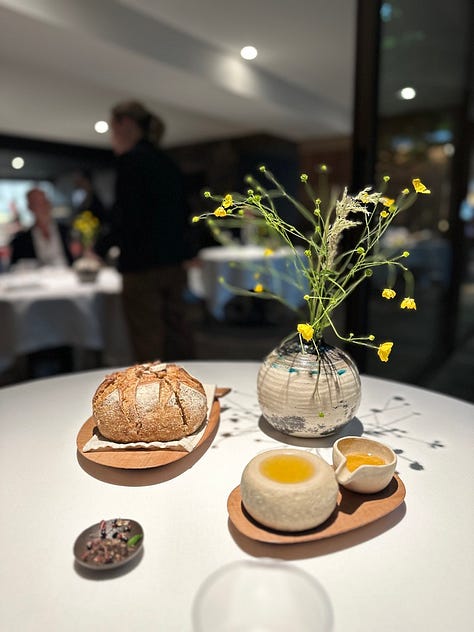
The first bite asked me to slow down.
The tart was earthy, bright, soft in a way
that reminded me of spring mornings.
Féra is a freshwater fish native to Lake Geneva—delicate,
often compared to trout or whitefish.
Here, it’s dehydrated into something sheer and crackling,
like a fish-skin pastry.
It’s not trying to be crunchy for crunch’s sake.
It’s saying: this land is enough.
Lavaret is another lake fish, a cousin of féra.
It’s lean, almost neutral, which makes it a perfect canvas.
A dab of garum—a fermented fish sauce,
ancient and deeply savory—brought umami without weight.
A brush of horseradish woke it up.
And that was it.
They could’ve done more.
They didn’t.
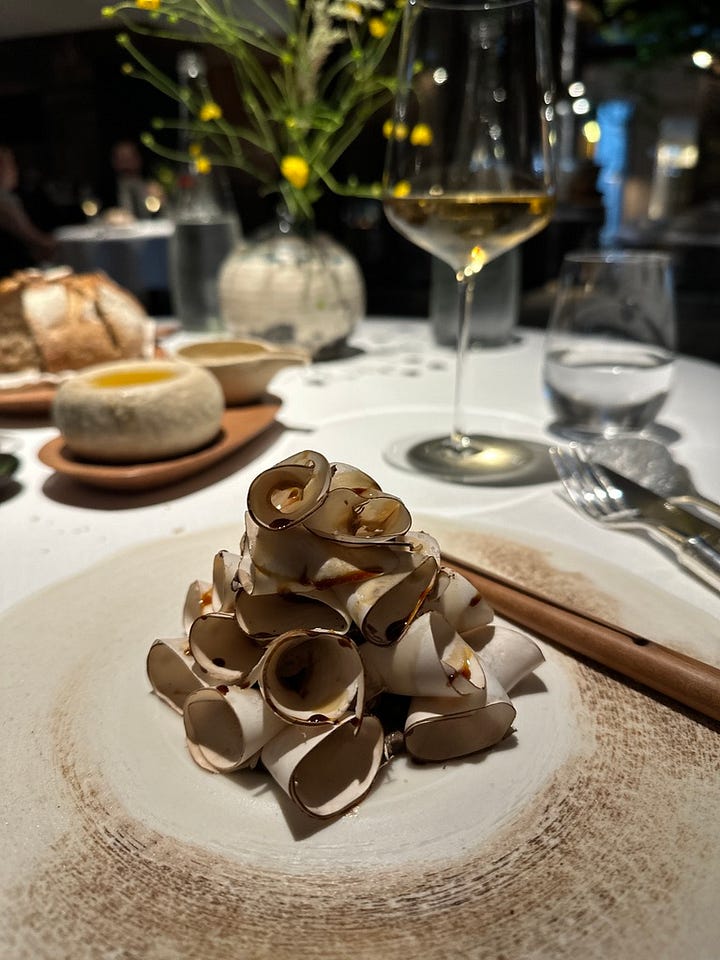
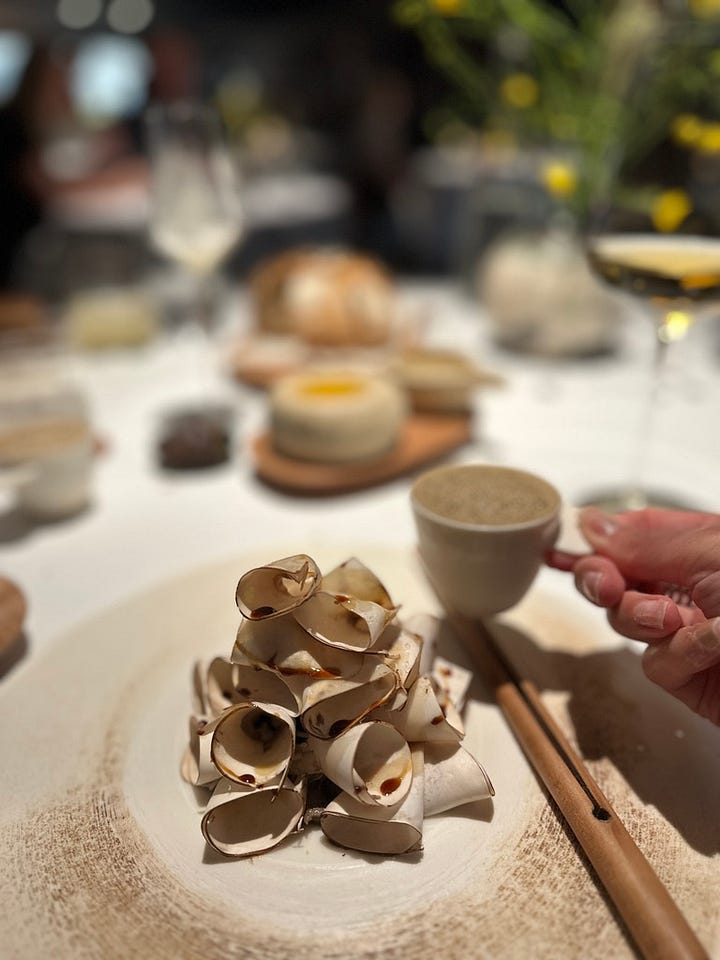
This was one of my favorite bites of the night.
It wasn’t showy.
Just local Savoie mushrooms,
handled with care.
Earthy. Honest.
Like someone cooked them for someone they loved.
It made me realize how rarely I taste vegetables treated with this kind of respect.
This one made me pause.
Crayfish—small, sweet, and delicate
—met something deeper and darker.
Poultry offal refers to the organs:
liver, heart, gizzards.
The parts most people avoid.
But done well,
offal adds something primal
and grounding.
It’s not elegant, but it’s real.
A high note and a low note,
sharing space.
Together, they created tension.
And then balance. (ugh, yum!)
Trout, soft and pink.
Féra poutargue—
salt-cured and dried fish roe,
grated like bottarga—
added salinity and depth.
It was a quiet kind of luxury—
like someone who knows where they’re from
and doesn’t need to say it out loud.
A palate cleanser disguised as a dish.
Bright. Bitter.
Almost medicinal in its greenness.
Like the kind of food
you don’t realize your body needed,
until you eat it.
Pike is a muscular,
slightly coarse fish.
It doesn’t flake like cod or melt like sea bass.
It fights back.
That made it memorable.
The jus—made from grilled bones—
was smoky, deep, almost primal.
This was one of the heartier moments in the meal.
But even here, it never tipped into indulgence.
Just weight, when weight was called for.
There are over 200 herb varieties
grown in their garden a stone’s throw away.
Some bitter, some peppery, some floral.
Sound cliché—but the salad felt alive.
The cheese was rustic and familiar—
like the meal suddenly dropped its formality and whispered,
Welcome to our home.

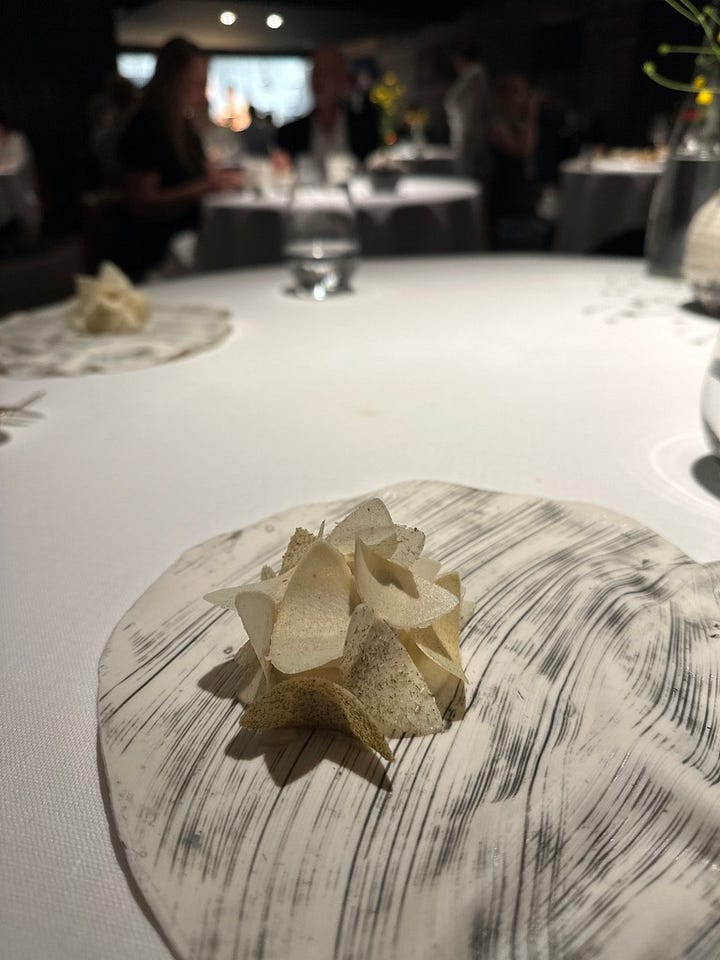
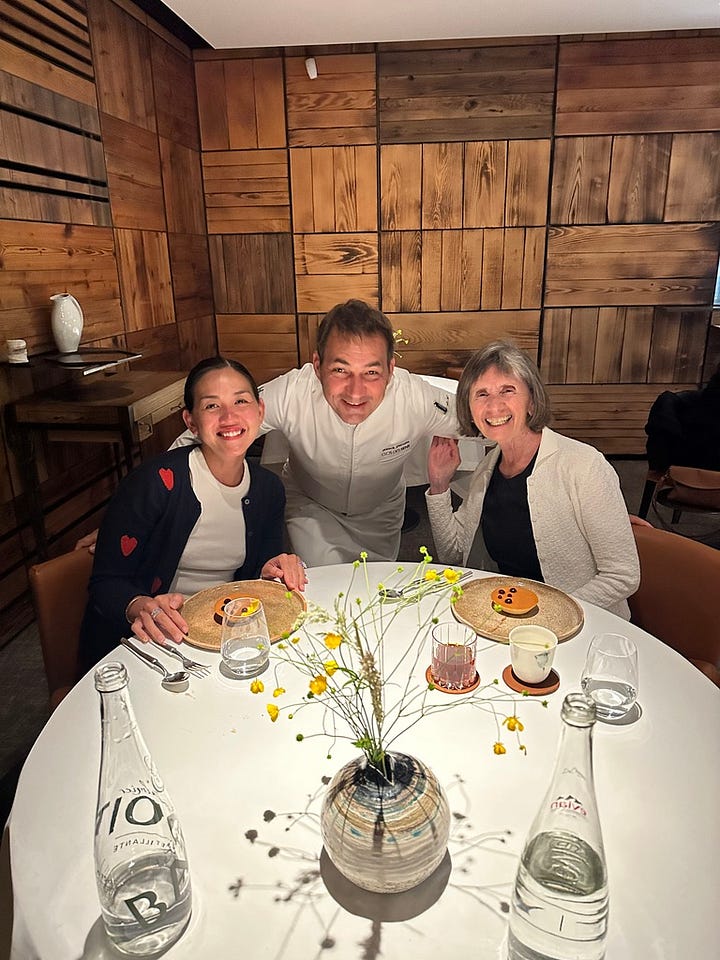

I didn’t expect hay to make me feel anything.
But it did.
There’s something almost nostalgic about the taste—
dry, grassy, honest.
It pulled me out of the dining room and into some imagined countryside.
One where someone’s grandmother might have dried herbs on the table
and made bitter coffee from roasted chicory root.
Not a sugar rush.
Not even dessert, really.
More like the epilogue of a great book.
Gentian is a bitter alpine root—used more often in amaro than pastry.
Here, it grounded the dish.
The hazelnuts gave it texture,
and the sage tied it all back to the beginning.
Sage was the first and last thing we tasted.
It felt like closure.
The end, but not really
I can’t sit through 9-course tasting menus every week.
And I don’t believe we should glorify fine dining
just because it’s rare or expensive.
But I do believe everyone should experience true excellence at least once.
Not to feel fancy—
to feel recalibrated.
Because a meal like this doesn’t try to win you over.
It invites you to notice.
To taste with intention.
To understand that sometimes, doing less
takes more courage.
Le Clos des Sens didn’t just feed me.
It made me ask better questions—
about food, about effort,
about what really matters.
That’s what I’ll remember.
Not the stars.
But the courage to do less, intentionally.
More recs here.
Till the next bite,
Hungryhelen




